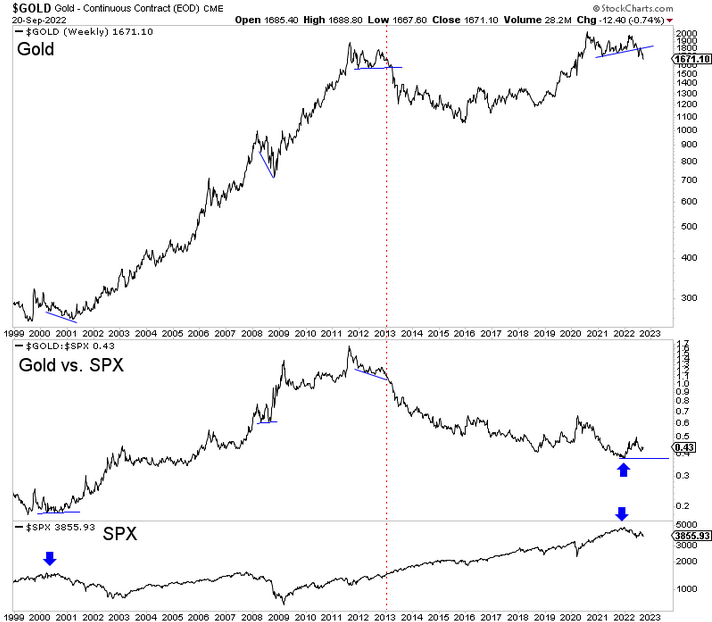Gold is breaking down technically. There’s no denying it.
Gold has already closed at a fresh 52-week and 2-year low in daily and weekly terms. It needs to close above $1715 at the end of the month to negate a monthly breakdown.
However, recent weakness has not been confirmed by similar markets.
Gold has made a lower low in September. The miners have not. Silver is up 7% this month, while gold has lost 3%.
Most importantly, unlike in 2013 (and few have looked beyond the nominal chart), gold has yet to make a new low against the stock market.
In our most recent article, we wrote about how gold stocks look their worst at major bottoms, and we showed how the gold to S&P 500 ratio had already bottomed or was making higher highs at each gold bottom.
In the chart below, we plot gold, the gold to S&P 500 ratio, and the S&P 500.
Note the positive divergence in the gold to S&P 500 ratio at the time of the 2001 and 2008 bottoms. Compare them to 2013, when the gold to S&P 500 ratio made lower lows in 2012 and began to crash in early 2013 before gold lost support at $1550.
Furthermore, note that the bottom in the gold to S&P 500 ratio in 2000 and presumed bottom at the tail end of 2021 coincided with major market peaks (blue arrows). Moreover, from mid-2012 through 2013, the S&P 500 did not even correct more than 9%!

With all that said, we must consider the entire context.
Gold is breaking down technically, and unless there is a big upside reversal into October, the path of least resistance is lower, and gold can drop another $100/oz from here.
The likelihood of a recession, lower lows in the stock market, and the end of Fed tightening will lead to a major bottom in precious metals and a huge move higher into and in 2023.
Gold can move lower before that happens but, one must note that there are some non-confirmations now and, positioning is skewed heavily towards more tightening and lower metals prices. Any blip of bad news on the economy or small unwinding of those positions can create a big rebound.
